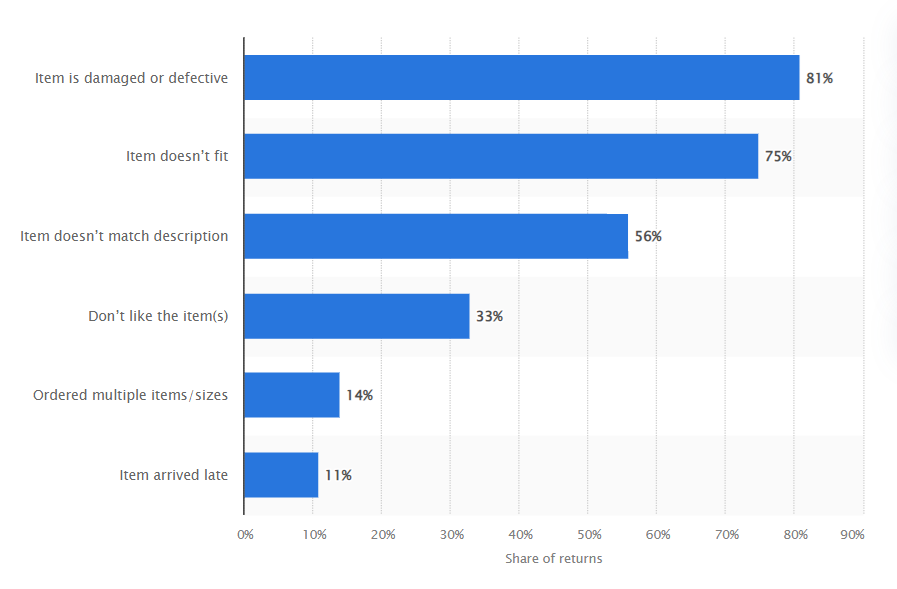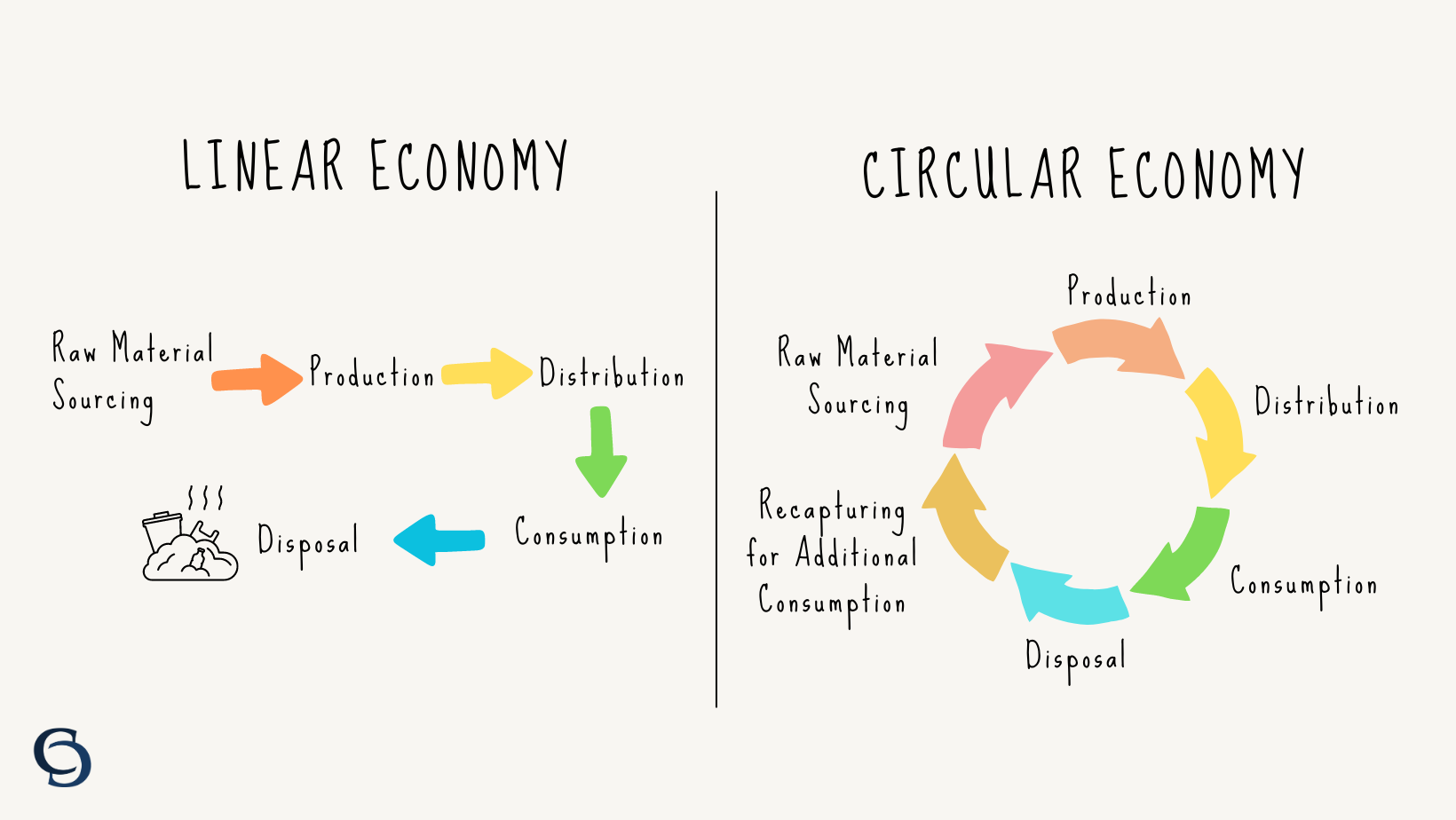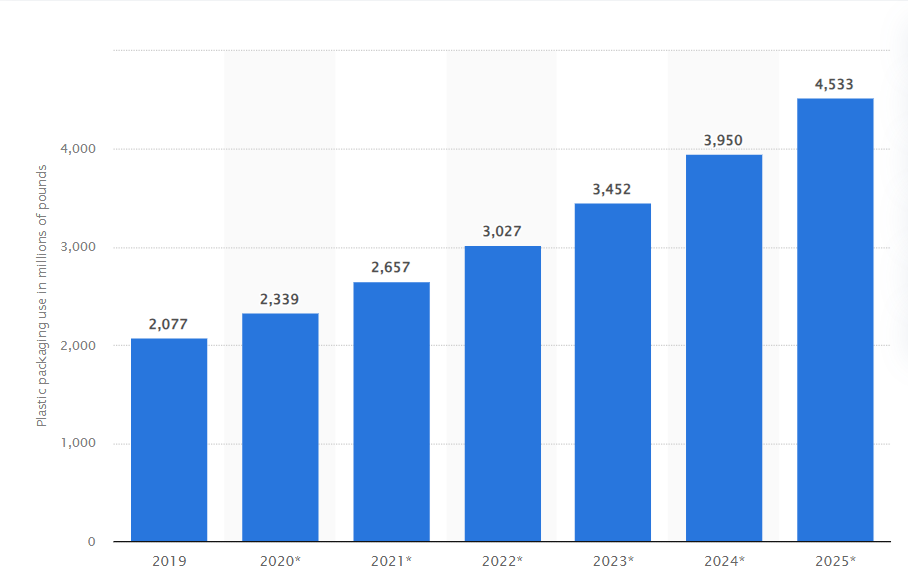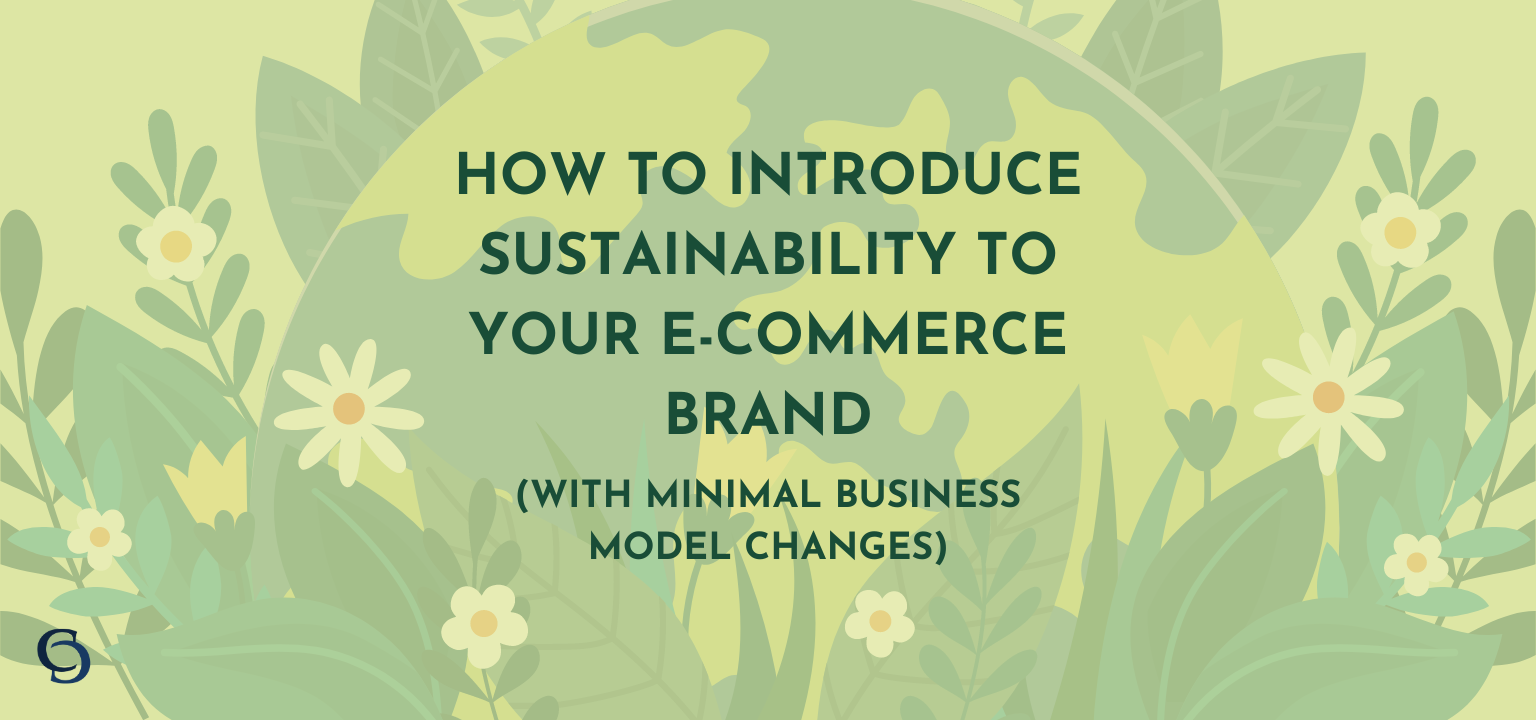How to Introduce Sustainability to Your E-commerce Brand (With Minimal Business Model Changes)
What can this product do to make my life easier?
Your target audience is always asking this question. With each day, the value addition needs to become more unique. Otherwise, your product is just not cutting it.
But over the last couple of years, this question has changed to: What can this product do to make my life easier and how is your business helping the environment?
The spiraling degradation of the environment is alarming, to say the least. So people are making both big and small changes in their daily lives to help curb it. This includes the type of clothes they wear, the food they eat, the car they drive, the energy sources they use, and the way they manage waste. This is possible today because more and more businesses are adopting eco-friendly practices, providing consumers with sustainable choices. Sustainability has become a key offering and a tool that enables customers to be a part of the change they want to see.
The flipside of this is, people are willing to let go of the convenience of online shopping to reduce their carbon footprint. This poses a challenge for businesses without a sustainable product line. Most of the things that can make these businesses environment-friendly require massive overhauls in business practices and a lot of money. Not a risk that small to medium-sized businesses have the funds or the backing to take.
What happens in those cases?
Thankfully, the answer does not have to be the obvious one.
In this blog, we are going to share a few ideas on how to make your e-commerce business sustainable. These ideas are different because they are:
- Less risky
- Easier to implement
- Do not require any huge changes to your business model
We are also going to share actionable steps to implement these ideas.
1. Reduce Product Return
According to Shopify, people return 20 – 30% of the products bought online. This is a huge burden on the planet. On the other hand, free return is one of the major deciding factors for choosing a brand. So there is no way out of it if you do not have a specialty product or a loyal customer following.
The most effective workaround is eliminating the common reasons behind product returns. Statista studied the return behavior of online shoppers in the US in 2022 and identified the top 6 reasons.


Reasons for returning online purchases in the United States in 2022
Surprisingly (not!), most of these are in the retailers’ control which is also good news. Here are some of the things you can do for immediate impact:
A. Provide a Good Customer Experience
What does a good customer experience mean?
-
- It provides customers with all the information they (think and don’t think they) need to make an informed purchasing decision
- The information is presented and placed in a way that makes it easy to consume and assists at critical instances in the user journey
Some ways to achieve a good customer experience:
i. Use High-Quality Visuals:
-
-
- Show the product from different angles
- Mention that product color may vary slightly due to lighting, if applicable
- Use Augmented Reality (AR) to help customers visualize products in their rooms, especially for electronics
- Implement plugins for virtual product try-ons
- For garments, mention the size of the model and include images of models in different sizes for relevant size options
-
ii. Provide Complete and Clear Product Descriptions
-
-
- Break descriptions into digestible portions and use bullet points
- Each product category should cover specific attributes:
- Apparel: Size guide, material, fit, brand information, care instructions
- Furniture: Clear dimensions, material, finish, key features, care instructions, assembly manual (for DIY products), information on assembly services
- Electronics: List what comes in the box, warranty details, brand information
- Use graphics to make the information easy to understand
-
iii. Simplify Review Submission
-
-
- Make the review form simple with minimal fields to encourage more users to leave reviews
- Incentivize users to add product images, as user-generated content holds more value than retailer descriptions
-
iV. Enhance Customer Support
-
-
- Make it easy for customers to get in touch with you for queries
- Offer live chat support to address any questions during the purchase process
-
Recommended Read: The Case of E-commerce Product Return – Who’s to Blame & Ways to Reduce
B. Leverage Technology
A business accumulates a lot of data with every purchase. It is important to be proactive with this data instead of reactive. Here are a few ways to do that:
i. Fraud Detection Solutions
Deploy fraud detection tools that verify identity, address, email, and phone numbers. These solutions can help identify patterns of fraudulent activity and high return rates in specific areas. By analyzing data on returns, businesses can pinpoint which zip codes or regions have unusually high return rates and take preventive measures.
ii. Return Rate Analysis
Regularly analyze return data to identify trends and patterns. Understanding the reasons behind returns can help you address the root causes.
iii. Address Validation
Implement an address validation system that checks and validates addresses in real time during the checkout process. This helps prevent errors that could lead to failed deliveries and subsequent returns, reducing costs associated with forward and return shipping.
C. Update Return Policies
-
- Limit the number of products eligible for returns, focusing on items with significant resale value and durability. Exclude items that are prone to wear and tear or are difficult to resell, such as personalized products or intimate apparel.
- Only approve the returns in case of issues with size, damaged products, misplaced orders, etc.
- For businesses with a physical presence, consider incentivizing in-store returns
2. Use AI for Demand Prediction
Imagine having a tool that can predict the demand for your products with remarkable accuracy. It considers factors like shopping preferences, shifting market trends, political events, seasonal demands, and even the weather of specific locations your e-store serves to forecast product demands. This can reduce excess inventory and minimize the risk of overstock ending up in landfills.
A combination of Machine Learning and AI can help you achieve this. IKEA uses a Demand Sensing AI that can predict demands with 98% accuracy across 450+ stores and 54 e-commerce markets.
Some popular demand forecasting tools include:
- Blue Yonder
- NetSuite Demand Planning Software
- RELEX Solutions
- Oracle Demand Management Cloud
- Brightpearl
3. Invest in Recommerce
Typically, we are accustomed to a linear economic model.
Raw material sourcing – Production – Distribution – Consumption – Disposal
To curb the huge amount of landfill this model produces, efforts are being taken to change this model into what is known as circular economy.
In this model, the waste (Disposal) is recaptured for additional consumption. One of the rising trends making this a reality is Reverse Commerce or Recommerce.


Linear vs Circular Economy
Recommerce involves giving products a second life by passing them on to a second or third owner. Or, recycling the products into other new products.
Still a niche market, consumers have been leading the first phase of recommerce. But recently, brands have started to get involved and are reaping benefits.
So how can you be a part of this movement? And what kind of change will it require for your business?
A. Peer-to-peer
Here’s what happens in the Peer-to-peer (P2P) model:
You provide a platform for your customers to buy and sell products to each other. You take care of the transaction and shipment. The conversation directly takes place between the buyer and the seller. The settlement takes place only after the buyer has received the product. Essentially, this is like a dropshipping model. You do not keep stock, you just provide the platform and take a cut of the sales.
Even though you have minimum involvement in the process, you can have some control. For example, you will only allow products from your brand to be sold in this setup.
Hanna Andersson is a children’s apparel brand that has worked out the peer-to-peer recommerce model perfectly. They have a dedicated site for their “Hanna Me Downs” program where parents can list Hanna Andersson clothing that their children have outgrown and set the price. The brand verification is done by validating the unique Style ID (present in the garment’s care label) on the website. Once a buyer checks out the preloved product, the seller can ship it directly to the buyer with a prepaid USPS shipping label. Seller gets paid once the buyer receives the product. The seller can choose between store credit (they get 100% of their listed price) or cash (store keeps 30%).
What it does is, it opens up a new sales channel for your business without any change in your primary business model. Also, it creates a positive impact on your customers and increases brand loyalty. All you need to do is commission a developer to create a separate site for the preloved section and you are set.
While apparel is one of the primary segments for recommerce, other products can be furniture, electronic goods, souvenirs, jewelry, toys, accessories, etc. However, a few things change with different categories. For example, technology change is a huge difference in the electronics market. A two-year-old laptop will not have a similar value as a two-year-old dress.
For electronics, you can consider encouraging your customers to be a part of change by donating their old laptops, tablets, keyboards, routers, scanners, etc. to non-profits like Human-I-T. They refurbish these devices and sell them at a low cost to low-income individuals.
Other Recommerce Programs That Brands Use
Even though P2P’s low-risk characteristic makes it more favorable, there are other more expensive re-commerce programs that require major business adjustments and have worked for many brands.
i. Buy Back
Patagonia, an outdoor gear retailer has partnered with reverse logistics firm, Trove to buy back and resell their lightly used products on the Patagonia website. Trove takes care of reverse shipping, repairs and cleaning, photographing the products, and fulfillment. Buyers receive store credit on Patagonia. Similar to Trove, ThredUp offers a Resale as a Service (RaaS) solution that facilitates e-commerce brands with resale capabilities on their own websites and provides the infrastructure to do so.
While this ‘Buy Back’ method works for a lot of brands, the problem with it is that you don’t know whether or not you can sell those items. In that case, the ‘Buy Back’ cost of unsold items will need to be absorbed by the brand.
ii. Partnering With Marketplaces
There are several recommerce marketplaces that offer partnership programs with brands for their bought back or excess inventory. For example, Poshmark, a new and secondhand marketplace has launched a Brand Closet program that enables retailers and brands of all sizes to directly sell to Poshmark’s community. Managed marketplace Rent the Runway has a “Share by RTR” consignment program where brands send them products for low to zero upfront costs in exchange for a share of the revenue.
4. Reduce Packaging


Estimated volume of e-commerce plastic packaging waste in 2019, by country
According to Statista, 2.1 billion pounds of plastic was used by e-commerce brands in 2019. This number has been estimated to reach 4.5 billion pounds by 2025. Packaging is a huge problem. The growing amount of waste underscores the urgent need for e-commerce businesses to adopt more sustainable packaging solutions.
A. Optimize Packaging Sizes
There’s no need for excess packaging. By buying boxes in various sizes, you can ensure that smaller items aren’t shipped in unnecessarily large boxes, which not only saves material but also reduces shipping costs. Additionally, consider offering customers the option to choose ‘minimal packaging’ at checkout for items that don’t need extra protection. Highlight the environmental benefits of this choice to encourage more customers to opt-in.
B. Use Sustainable Packaging Materials
Switch to sustainable packaging options by partnering with companies like EcoEnclose, which specializes in eco-friendly packaging solutions. These companies offer packaging made from recycled materials, fully recyclable packaging, reusable packaging, and even eco-friendly tape.
C. Introduce Refillable Options
For products that are used repeatedly, such as health and beauty items or certain medicines, consider offering refillable options. Refillable systems often involve setting up a return and refill program or providing easy-to-use refill packets, which can also foster customer loyalty and repeat business.
5. Buy Carbon credits
What Are Carbon Credits?
Carbon credits are tradable certificates that represent the right to emit one ton of carbon dioxide or the equivalent amount of other greenhouse gases. They play a crucial role in international efforts to combat climate change by encouraging reductions in carbon emissions.
Benefits of Carbon Credits
Purchasing carbon credits helps businesses offset their environmental impact, contributing to sustainability projects that might involve renewable energy, reforestation, or other emissions-reducing initiatives.
How to Implement Carbon Credits in Your E-Commerce Business
i. Calculate Your Carbon Footprint
First, determine the total greenhouse gas emissions your business produces, considering factors such as energy use and logistics.
ii. Set a Budget for Carbon Credits
Based on your carbon footprint, decide how many credits you’ll need to purchase to neutralize your emissions. Plan this expenditure in your budget to ensure it’s manageable.
iii. Choose a Reputable Carbon Offset Project
It’s crucial to invest in legitimate and effective carbon offset projects. Look for projects certified by recognized standards such as the Verified Carbon Standard or the Gold Standard. These projects are verified for their impact and sustainability, ensuring that your investment genuinely contributes to environmental protection.
iV. Involve Your Customers
Introduce an option at checkout for customers to add a small contribution towards carbon offsetting. This engages them in your eco-friendly practices and helps expand your impact. Integrations like Cloverly make it easy to offer carbon offsets at checkout.
In an era where consumers increasingly question, “What can this product do to make my life easier, and how is your business helping the environment?”, it’s clear that sustainability is no longer a luxury—it’s a necessity. By implementing the strategies discussed, you’ll not only adhere to growing regulatory pressures and consumer expectations but also establish your brand as a leader in the crucial shift towards more sustainable business practices. Remember, every small change contributes to a larger impact, making our planet a better place for future generations.
Ready to start making a difference with your e-commerce business? Each step you take builds a path towards a sustainable future. And we need to start doing this today. Because there is no Plan(et) B.


